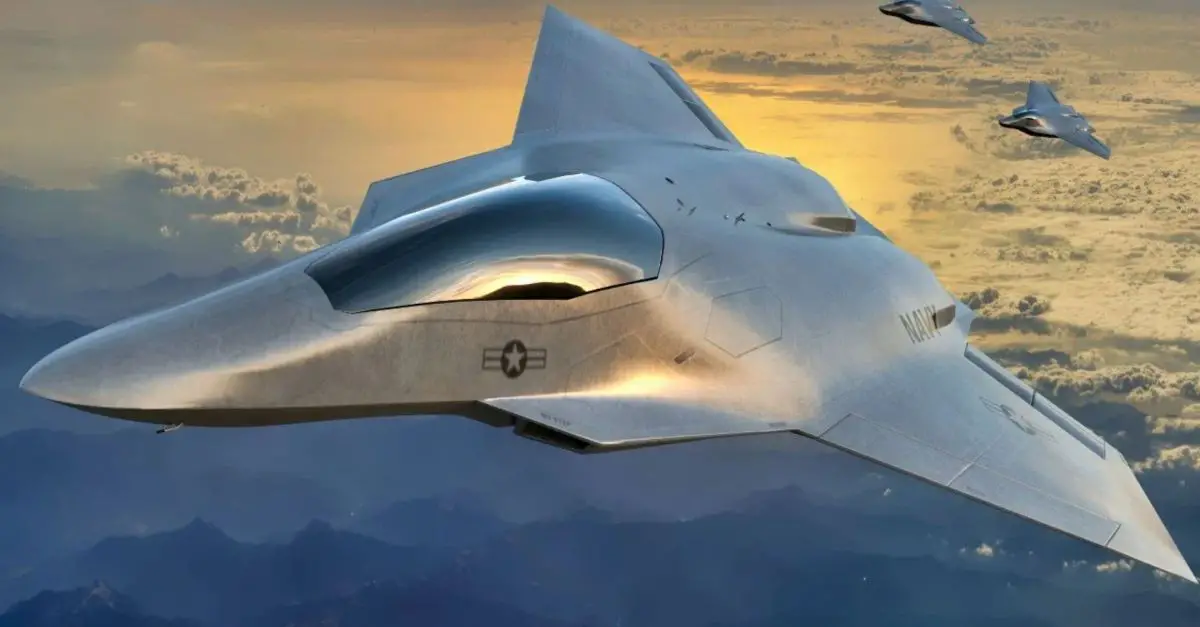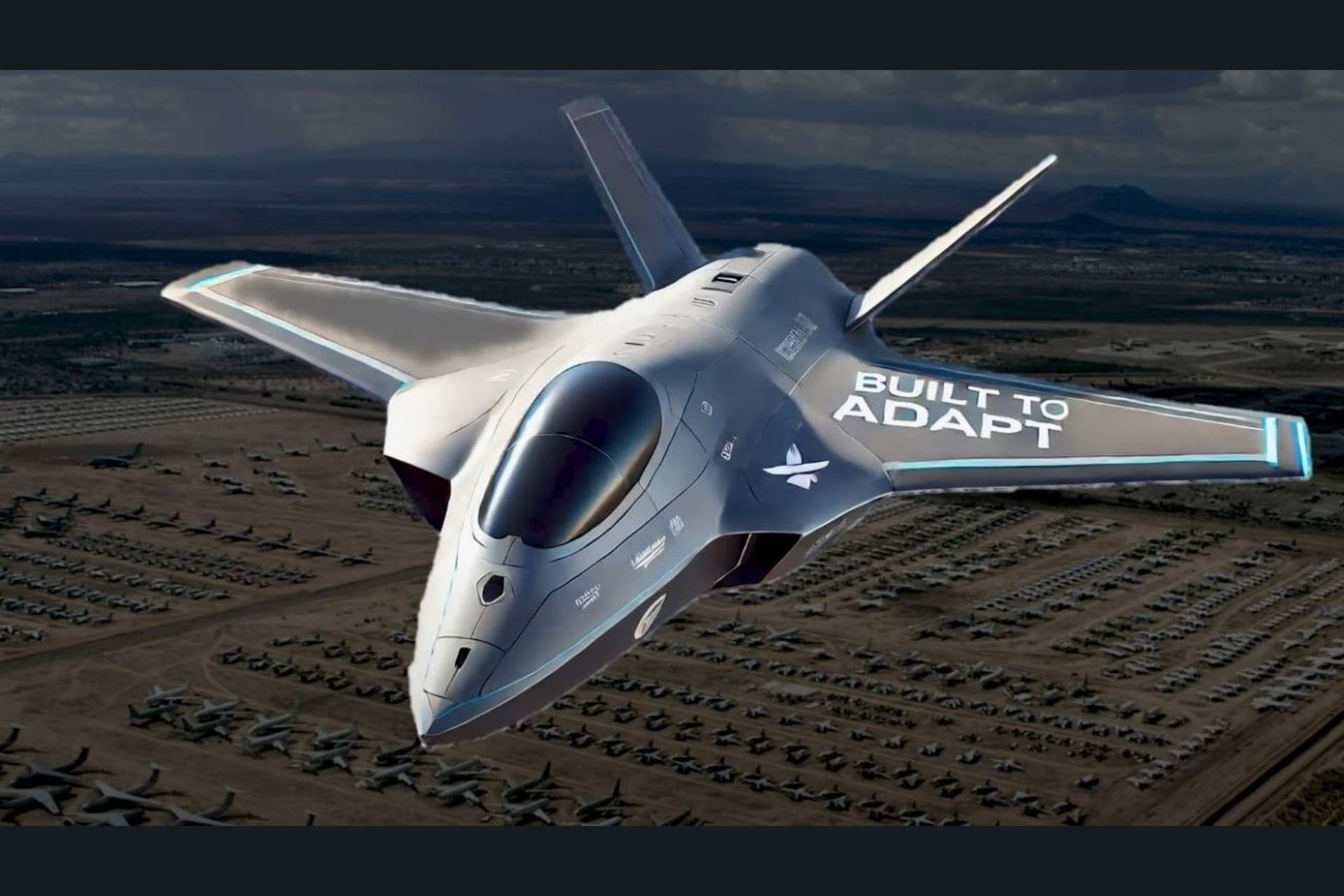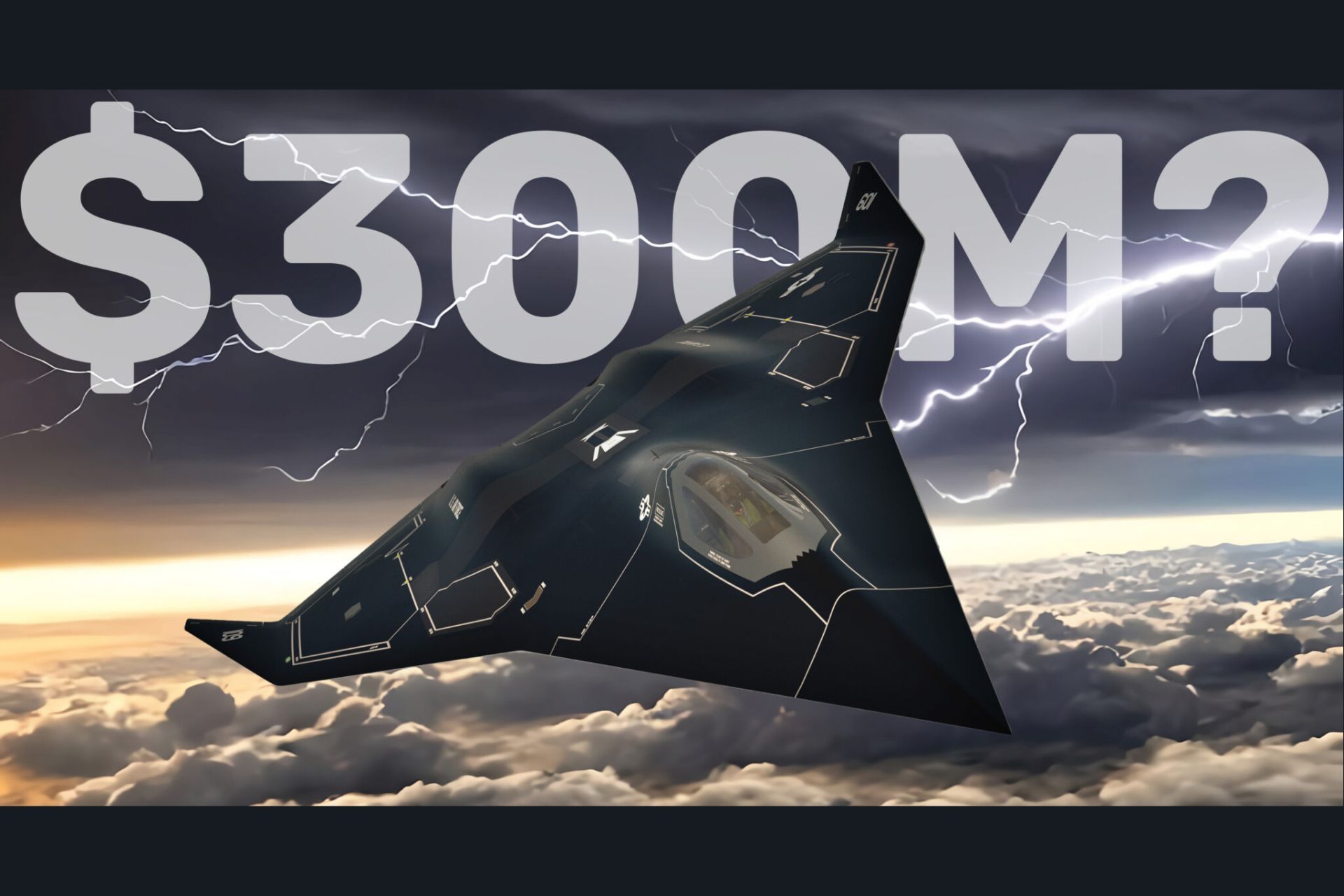Breaking News
US Air Force Pauses NGAD Project, Explores 6th Gen Light Fighter Concept.
Amid uncertainty surrounding the U.S. Air Force's Next Generation Air Dominance (NGAD) program, a high-ranking American official introduced a concept for a light stealth fighter. U.S. Air Force Chief of Staff General David W. Allvin presented the "light fighter" concept during his address at the Global Air and Space Chiefs Conference held in London last month. The conference brought together numerous defense industry leaders. Although Allvin did not directly reference NGAD, his concept of a light fighter was accompanied by calls to shift aircraft development from a "built to last" to a "built to adapt" philosophy.
Follow Army Recognition on Google News at this link

Concept view of NGAD project (Picture source: OSINT )
The End of NGAD?
The NGAD program has faced numerous criticisms, including its cost, relevance, overlap with drone concepts, difficulty in integration, and lack of adaptability. The estimated cost of several hundred million dollars per aircraft makes it unrealistic to expect the NGAD program to progress as initially envisioned by the Air Force. At $300 million per aircraft, the program’s goals seem unattainable. Frankly, the government cannot afford the system as currently proposed. However, an unmanned system might be feasible. Such a system would integrate the most advanced elements of next-generation air dominance aircraft into an unmanned platform. This platform could be linked to manned F-35, F-22, or even F-16 aircraft, providing the kind of distributed and networked capabilities the Air Force needs in this dynamic threat environment. Of course, the most important question is whether the NGAD system is even necessary.
An Independent Project for Now
The U.S. Air Force has not acknowledged the existence of such a program. The concept presented by General Allvin is purely theoretical. However, its design bears a striking resemblance to the F-35 Lightning II stealth aircraft, with some experts suggesting it is a scaled-down version of the fifth-generation aircraft. This hypothetical fighter would be a single-engine aircraft seemingly designed to be low-visibility. Apart from the air intakes, which are rear-facing on this aircraft compared to the forward-facing ones on the Lightning II, the wings and V-tail of this aircraft are identical to those of the F-35.
The idea of a light fighter has existed for some time. Several officials have discussed the idea of developing an entirely new light fighter (4th or 4.5th generation) for low-end threats, while others have proposed building a light fighter variant of a sixth-generation aircraft.
For example, the U.S. Air Force previously stated that it was considering developing a light fighter, the F-7, derived from the T-7 Red Hawk trainer aircraft to replace the F-16 C/D Viper fleet.
In 2021, retired General James M. Holmes, former head of Air Combat Command, suggested that there could be two variants of the sixth-generation NGAD: one with long range and payload for the Indo-Pacific and another for relatively shorter ranges in potential European combat zones. The latter, as some interpreted, would be a lighter variant.
That same year, outgoing Air Force Chief of Staff General Charles Q. Brown Jr. announced the start of a months-long study on the future composition of the Air Force, which, according to him, could involve a "clean sheet design." Known as a "fourth-and-a-half generation or fifth-generation minus" aircraft, it would be affordable enough to acquire in sufficient numbers to eventually replace the F-16. These ideas, however, have seen little progress.
Nevertheless, Allvin's conceptual light fighter is noteworthy because it proposes reorganizing the U.S. Air Force's fleet with aircraft capable of adapting to modern and evolving technologies.

Presented image of Gen Allvin project of light fighter ( Picture source : General Allvin)
Adaptability at the Forefront
Allvin advocated for the idea that structures should be "built to adapt," in contrast to the Cold War and post-Cold War paradigm of structures being "built to last." He suggested that this may no longer be true for many current aircraft platforms.
He mentioned that the underlying assumption was that systems designed to last would remain "relevant" in the future. "This proposition can become a burden. It still works, but it’s not as effective," Allvin said, without naming any specific USAF platforms. "The vast majority of U.S. Air Force systems are designed and developed with this value proposition."
He then unveiled the image of the concept jet, emphasizing the need to prioritize adaptability over durability or endurance. Allvin stressed that this would be achieved by focusing on creating new versions of standard software that would work on multiple platforms.
According to this approach, manned combat aircraft would be more "disposable," with the Air Force's aging fleets focusing on cutting-edge software, while hardware could be discarded much more quickly. Although Allvin did not specify any system, this approach highlights concerns that multi-billion-dollar platforms, such as NGAD, could quickly become obsolete.
"The ability to update at the speed of software is the advantage we can offer our adversaries," Allvin stated. He also emphasized that future air forces would heavily rely on "swarming" to meet operational requirements, in addition to being system-centric rather than platform-centric.
The pace of technological progress is accelerating rapidly. As new avionics and software are introduced, airframes can be gradually improved through the increasing adoption of modular designs. It seems unwise to make strict technological promises to a multi-billion-dollar platform that could become obsolete in a few years rather than decades. Any new airframe would have a longer lifespan if flexibility were prioritized.
To continually develop an airframe over time, Allvin envisioned a jet that would rely on open systems architecture, modular design, digital engineering, and additive manufacturing/3D printing.

concept view of major critics against NGAD ( Picture source : OSINT )
Conclusion
The unveiling of this new fighter concept comes just weeks after the U.S. Air Force announced that NGAD was under review due to its high costs. Although top military officials have indicated that the program is not dead, the uncertainty surrounding the next-generation aircraft has shaken observers and lawmakers.
According to the plan, NGAD would replace the F-22 Raptors in the 2030s. Currently, they lack a replacement, and it is likely that they will remain in service into the 2040s.
For now, the U.S. Air Force has yet to officially acknowledge its intention to develop a low-visibility modular light fighter. However, Allvin's concept may have paved the way for a debate on a light attack aircraft, especially as the threat of conflict persists and the USAF needs more fighters with futuristic technology to replace its aging jets.


























